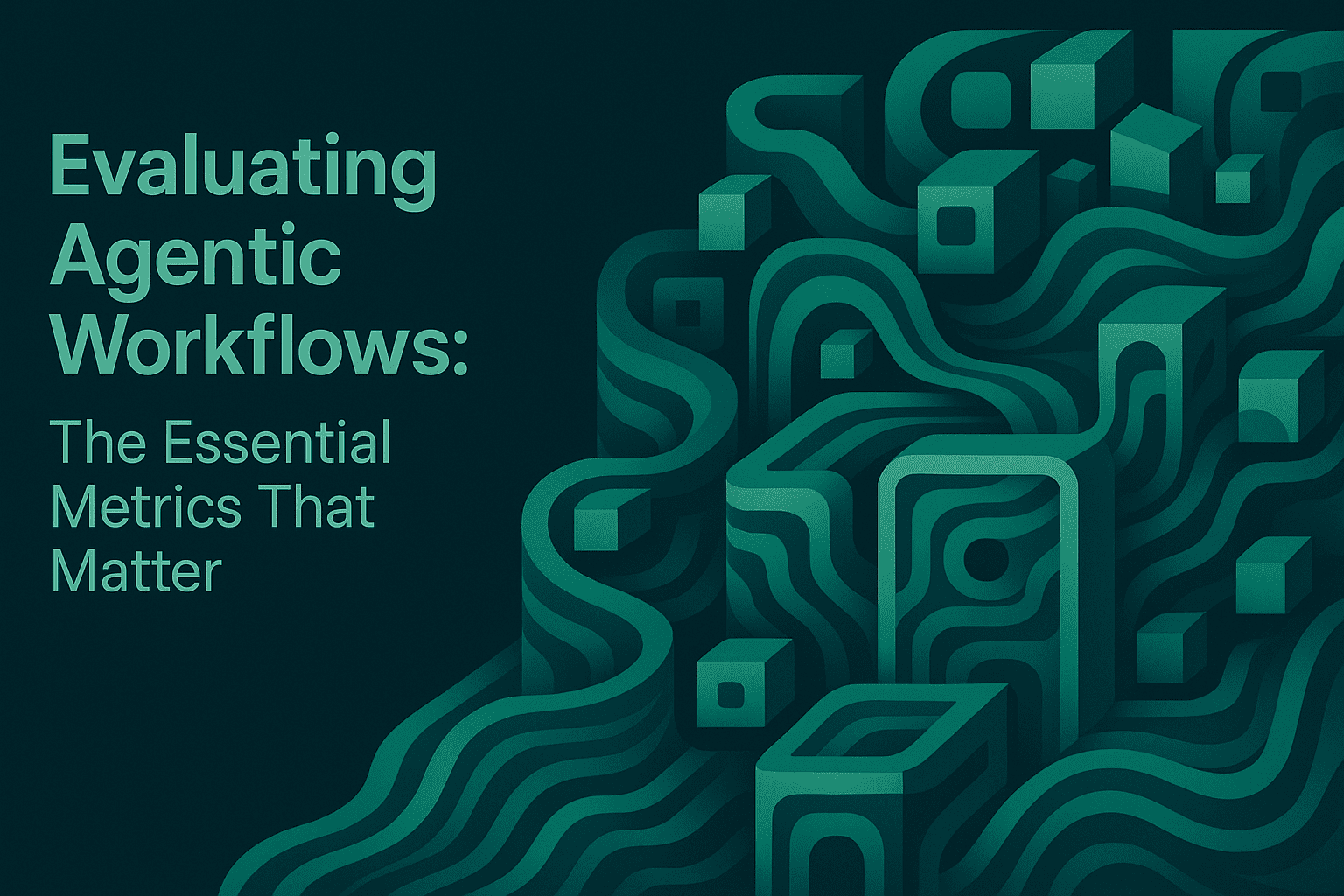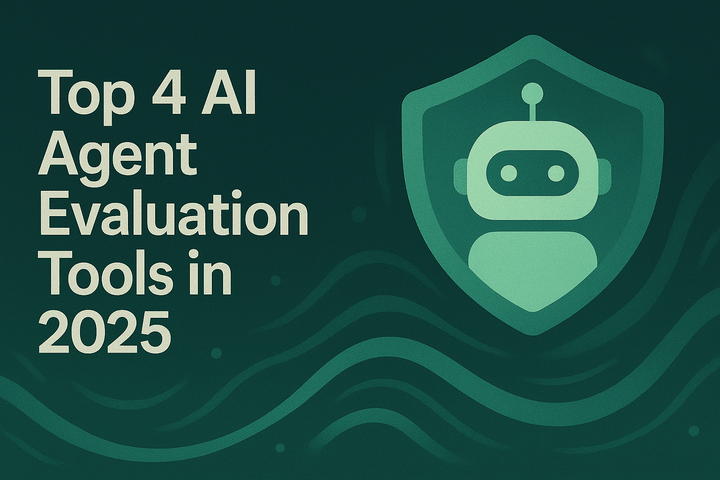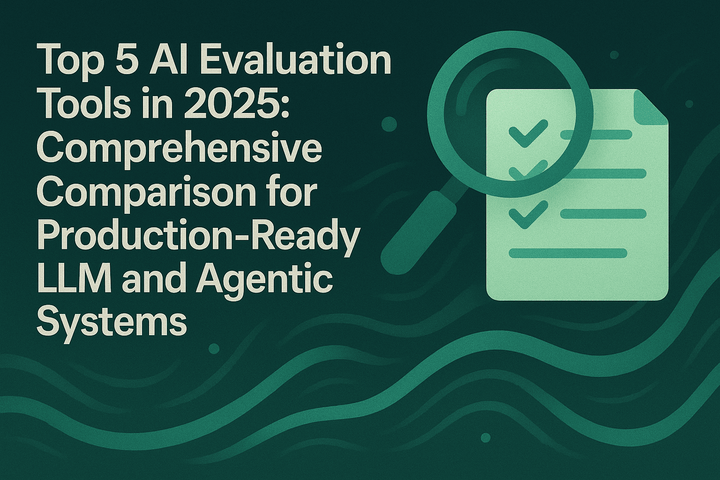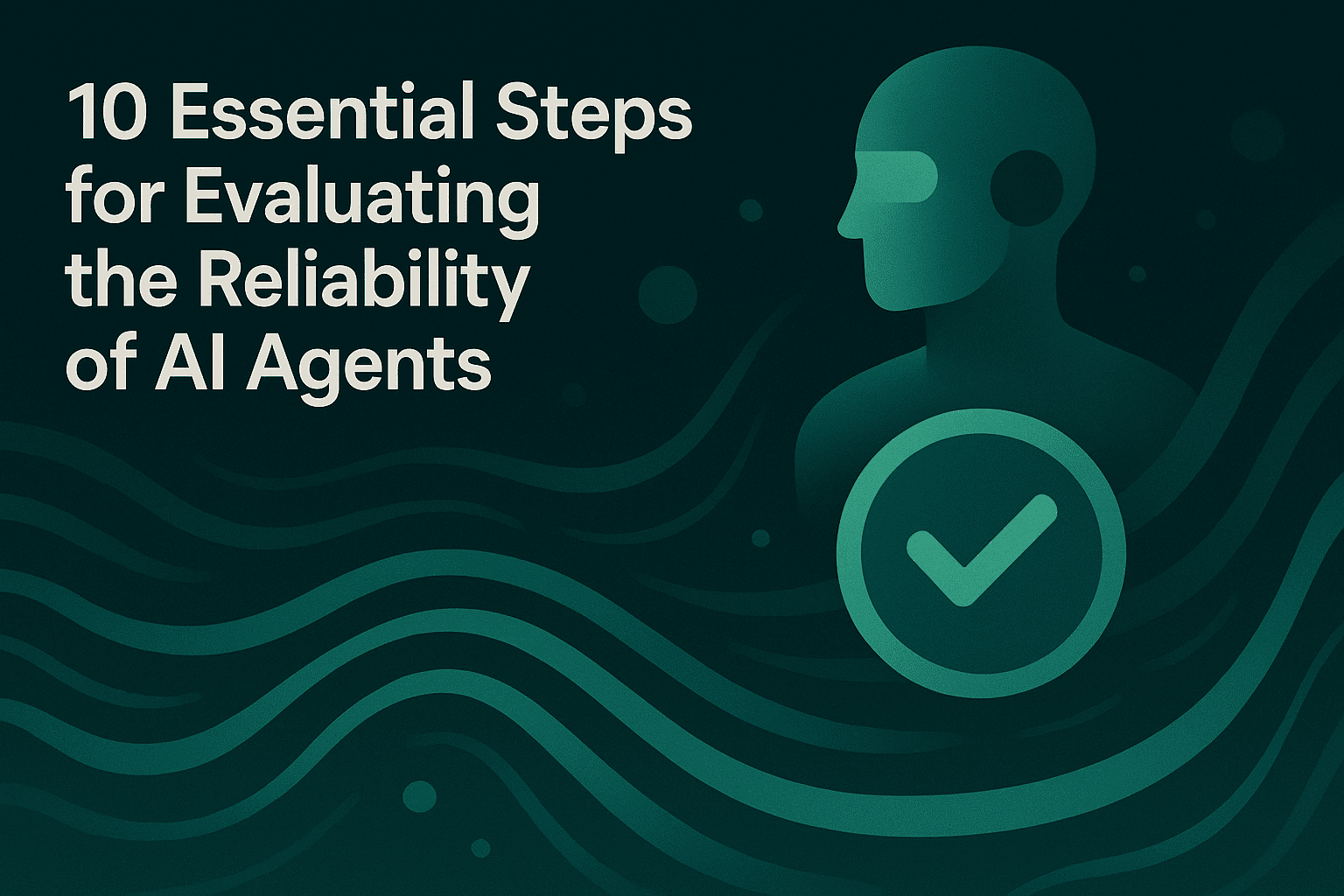Evaluating Agentic Workflows: The Essential Metrics That Matter

TL;DR
Agentic AI systems must be evaluated beyond static benchmarks. Effective assessment spans three layers: system efficiency (latency, tokens, tool usage), session-level outcomes (task success, step completion, trajectory quality, self-aware failures), and node-level precision (tool selection, error rate, tool call accuracy, plan evaluation, step utility). This structure quantifies planning, reasoning, and action reliability across dynamic, multi-turn environments. Teams should operationalize these metrics through unified simulation, evals, and observability to catch regressions early and enforce production quality.
Introduction
Agentic AI plans, reasons, and takes actions across multi-step workflows. Unlike single-shot LLM tasks, agents operate in dynamic contexts, select tools, maintain memory, and adapt policies based on feedback. Evaluating these systems requires measuring end-to-end goal completion, intermediate decision quality, and infrastructure efficiency under realistic scenarios. Teams should pair pre-release simulation and evals with production observability to ensure reliable outcomes across environments. Explore platform capabilities in Maxim’s Docs and product pages for Simulation & Evaluation and Agent Observability.
Essential Components of AI Agents
- Planning and reasoning enable agents to decompose tasks into actionable steps, choose tools, and adjust based on feedback loops.
- Reliability depends on how well agents handle multi-turn interactions, maintain context, and avoid compounding errors.
- Real-world performance evaluation must go beyond static benchmarks to assess decision-making, adaptability, and goal-directed behavior in dynamic scenarios.
- Multi-turn evaluations are critical to capture trajectory quality, deviations, and recovery strategies across steps and tools.
- Operationalizing these checks across simulation, evals, and observability builds high-confidence deployments. See Agent Simulation & Evaluation and Agent Observability.
Components of Agentic Evaluations
- System efficiency metrics quantify latency, throughput, and cost characteristics that affect scalability.
- Session-level evaluation measures whether the agent achieves the user’s goal and how it progresses through expected steps.
- Node-level evaluation inspects each tool call, parameter choice, plan step, and output correctness to pinpoint root causes.
- Teams benefit from unified views and distributed tracing across sessions and spans to debug complex trajectories. Learn more in Maxim’s Docs.
Metrics for Agent Evaluation
1) System Efficiency Metrics
- Completion Time:
- Measures how long each task and sub-step takes, surfacing slow segments that bottleneck end-to-end flows.
- Example: Comparing average completion time across two prompt versions identifies latency regressions during tool-heavy phases. Use Agent Observability for distributed tracing and latency insights.
- Task Token Usage:
- Tracks tokens across planning, tool orchestration, and responses to verify cost-efficient behavior at scale.
- Example: A spike in tokens during planning indicates over-exploration; adjust prompts or tool invocation policies. See Experimentation for prompt optimization and versioning.
- Number of Tool Calls:
- Counts total tool invocations to identify unnecessary calls and reduce latency/cost without harming accuracy.
- Example: Consolidating redundant search requests lowers tool-call count and improves throughput. Evaluate with Agent Simulation & Evaluation.
2) Session-Level Evaluation
- Task Success:
- Determines whether the agent achieves the user’s goal based on session output and acceptance criteria.
- Example: For a support agent, “resolved ticket with correct steps and final confirmation” qualifies as success. Configure evaluators and human review in Agent Simulation & Evaluation.
- Step Completion:
- Assesses conformance to a predefined approach—did the agent execute all expected steps correctly without unnecessary deviation.
- Example: A purchase workflow requires authenticate → validate payment → confirm order; missing validation flags a critical gap. Visualize across runs in Agent Observability.
- Agent Trajectory:
- Evaluates whether the agent followed correct steps through the session (inputs/outputs per turn) and avoided loops.
- Example: A repeated “search → summarize → search” loop indicates poor stopping criteria; adjust policy and prompts in Experimentation.
- Self-Aware Failure Rate:
- Measures explicit agent acknowledgments of inability or system limitations (e.g., “rate limit,” “insufficient permissions”), differentiating capability gaps from silent failures.
- Example: Elevated self-aware failures after a provider change suggest policy or access configuration issues; trace and remediate via Agent Observability.
3) Node-Level Evaluation
- Tool Selection:
- Checks whether the agent chose the correct tool with appropriate parameters at each call; self-explaining LLM-evals can provide reasons for scores.
- Example: Selecting “database search” instead of “web search” for internal queries earns a positive selection score. Configure flexible evaluators in Agent Simulation & Evaluation.
- Tool Call Error Rate:
- Verifies that tools produce outputs; identifies failures due to connectivity, schema, or parameter errors that can cascade into later steps.
- Example: A sudden rise in “HTTP 4xx” errors from a knowledge API breaks downstream summarization; monitor and alert with Agent Observability.
- Tool Call Accuracy:
- Compares tool outputs against expected results or ground truth when available; quantifies utility of calls relative to the task.
- Example: Matching returned SKUs to requested filters for a catalog query yields an accuracy score; review mis-matches in traces using Agent Observability.
- Plan Evaluation:
- Evaluates quality of the agent’s plan against the task’s requirements; planning failures are common and must be measured and corrected.
- Example: A plan that skips authentication for account changes is a high-severity fault; enforce checks through evals and policies in Agent Simulation & Evaluation.
- Step Utility:
- Measures the contribution of each step to the final outcome, highlighting non-contributing or redundant actions for pruning.
- Example: Removing non-contributing “re-explain” steps reduces tokens and latency without impacting success; iterate in Experimentation.
Evaluation as a Safety Net
- Evals serve as guardrails across development and production, catching regressions, hallucinations, and policy violations early.
- Automated evaluators combined with human-in-the-loop review ensure alignment to user expectations and domain standards.
- Distributed tracing and periodic quality checks in production enforce reliability for agentic applications at scale. See Agent Observability and Docs.
- For resilience against adversarial inputs, incorporate safeguards against prompt injection and jailbreaking with policies and evaluation gates. Review best practices in Maxim AI.
Additional Reading and Resources:
- Top 5 Platforms to Test AI Agents (2025): A Comprehensive Guide
- The Ultimate Guide to AI Observability and Evaluation
- RAG Evaluation: A Complete Guide for 2025
Conclusion
Evaluating agentic workflows requires layered metrics that reflect how agents plan, reason, and act under dynamic conditions. System efficiency ensures scalability; session-level outcomes validate end-to-end goal achievement; node-level checks pinpoint root causes and tune behavior. When integrated with simulation, evals, and observability, teams gain a comprehensive loop for continuous improvement and trustworthy operations. Explore unified capabilities in Agent Simulation & Evaluation, Agent Observability, and Docs.
FAQs
- What is agent evaluation in AI?
- Agent evaluation measures planning quality, tool usage, and goal completion across multi-turn interactions, capturing trajectory fidelity and recovery from failure. Learn how to configure evaluators in Agent Simulation & Evaluation.
- How do session-level metrics differ from node-level metrics?
- Session-level metrics focus on the overall outcome and step conformance; node-level metrics analyze each tool call, parameter selection, and output correctness to identify root causes. Operational insights are available in Agent Observability.
- Which efficiency metrics matter most for scaling agents?
- Completion time, token usage, and number of tool calls drive latency and cost efficiency. Use Experimentation to optimize prompts and policies.
- How can teams prevent prompt injection and jailbreaking in production?
- Combine input sanitization, policy checks, evaluator gates, and tracing to detect and block adversarial patterns. Guidance is available in Maxim AI.
- How do I operationalize these metrics?
- Use simulation to create scenarios and personas, run evaluators at session and node levels, and route production logs through periodic quality checks with alerts. Start with Agent Simulation & Evaluation and Agent Observability.
Ready to validate and scale agentic workflows with confidence? Request a demo at https://getmaxim.ai/demo or sign up at https://app.getmaxim.ai/sign-up.


